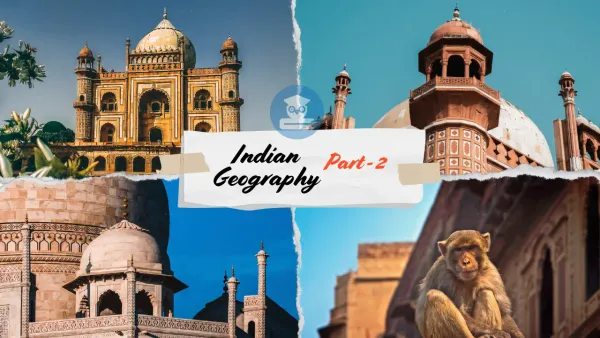Jharkhand General Knowledge / Jharkhand GK / Jharkhand History

Jharkhand, known as the “Land of Forests,” is one of the most culturally rich and resourceful states of India. Established on 15 November 2000, Jharkhand was carved out of Bihar and has since emerged as a state with unique cultural heritage, abundant mineral resources, and significant historical importance. Studying Jharkhand General Knowledge (Jharkhand GK) is crucial for aspirants preparing for competitive examinations like JPSC, UPSC, SSC, Railways, Banking, and State-level recruitment exams, as well as for anyone who wishes to understand the history, geography, politics, and culture of the state.
Jharkhand History
The history of Jharkhand dates back to ancient times when it was known as the land of the Munda, Santhal, Oraon, and Ho tribes. Archaeological findings suggest that the region was part of the Mahajanapada period and later came under the rule of the Magadha Empire. During the medieval period, Jharkhand witnessed the rise of local kingdoms and resistance movements against Mughal and British rule. The tribal uprisings, such as the Santhal Rebellion (1855–56) and the Ulgulan led by Birsa Munda (1899–1900), are significant milestones in Jharkhand’s history. These movements reflect the courage and resilience of the tribal communities who fought against exploitation and injustice.
Geography and Natural Resources
Jharkhand is blessed with a rich natural landscape consisting of dense forests, rolling hills, and waterfalls. The state is home to prominent rivers like Damodar, Subarnarekha, Koel, and Barakar, which play a vital role in agriculture and hydroelectric power generation. Known as the mineral heartland of India, Jharkhand contributes significantly to the nation’s coal, iron ore, mica, copper, and uranium production. Cities like Jamshedpur, Bokaro, and Dhanbad are important industrial hubs, making Jharkhand an economic powerhouse.
Culture and Heritage
The cultural heritage of Jharkhand is deeply rooted in tribal traditions, folk music, and festivals. Sarhul, Karma, Sohrai, and Tusu are some of the widely celebrated festivals that showcase the vibrant lifestyle of the people. The region is also famous for its handicrafts, paintings (like Sohrai and Kohbar art), and traditional dance forms. Jharkhand’s cuisine is simple yet diverse, with dishes like Thekua, Rugra, Dhuska, and Handia being popular among locals.
Modern Jharkhand
Today, Jharkhand is a state that balances tradition with progress. While it continues to preserve its tribal identity and heritage, it has also become an important center for steel production, coal mining, and industrial development. Ranchi, the capital city, is known not only as a political center but also as a growing hub of education and sports. The state has produced many sports personalities like MS Dhoni, Deepika Kumari, and Lovlina Borgohain, who have brought pride to the nation.
Importance of Jharkhand GK
Learning Jharkhand GK and History helps students and aspirants prepare effectively for competitive exams. Questions related to Jharkhand’s history, geography, politics, economy, and culture are frequently asked in state and national-level exams. A strong knowledge base in Jharkhand GK can significantly improve one’s chances of success.
1. In which year Jharkhand was formed as a separate state
(A) 1998
(B) 2000
(C) 2001
(D) 2003
Correct Answer: (B) 2000
2. Bihar is located on the ________ side of Jharkhand
(A) North
(B) South
(C) East
(D) West
Correct Answer: (A) North
3. Which one is the sub-capital of Jharkhand
(A) Ranchi
(B) Bokaro
(C) Dhanbad
(D) Dumka
Correct Answer: (D) Dumka
4. Which one is known as the steel city of India
(A) Ranchi
(B) Dhanbad
(C) Hazaribagh
(D) Jamshedpur
Correct Answer: (D) Jamshedpur
5. Total number of districts in Jharkhand
(A) 17
(B) 20
(C) 23
(D) 24
Correct Answer: (D) 24
6. Which one is the state bird of Jharkhand
(A) Peacock
(B) Pigeon
(C) Koel
(D) Eagle
Correct Answer: (C) Koel
7. Which one is the largest district of Jharkhand by area wise
(A) Palamu
(B) Ranchi
(C) Pashchimi Singhbhum
(D) Giridih
Correct Answer: (C) Pashchimi Singhbhum
8. What is the literacy rate of Jharkhand according to 2011 census
(A) 62.38 %
(B) 66.41 %
(C) 72.11 %
(D) 73.56 %
Correct Answer: (B) 66.41 %
9. Who has established the Jamshedpur city
(A) JN Tata
(B) Dorabji Tata
(C) Ratan Tata
(D) Nusserwanji Tata
Correct Answer: (A) JN Tata
10. Total number of recognised tribes in Jharkhand
(A) 14
(B) 22
(C) 26
(D) 32
Correct Answer: (D) 32
11. The Bokaro Steel Plant was established in the year
(A) 1960
(B) 1964
(C) 1971
(D) 1973
Correct Answer: (B) 1964
12. Who was the first Chief Minister of Jharkhand
(A) Shibu Soren
(B) Babulal Marandi
(C) Arjun Munda
(D) Madhu Koda
Correct Answer: (B) Babulal Marandi
13. Which Indian Governor-General has established the Indian School of Mines
(A) Lord Irwin
(B) Lord Hardinge
(C) Lord Mountbatten
(D) Lord Curzon
Correct Answer: (A) Lord Irwin
14. Who was the first Chief Justice of the Jharkhand High Court
(A) P. K. Balasubramanyan
(B) Nelabhoy Dhinakar
(C) S. J. Mukhopadhaya
(D) Vinod Kumar Gupta
Correct Answer: (D) Vinod Kumar Gupta
15. Hundru Falls is created by the
(A) Bansloi River
(B) Baitarani River
(C) Subarnarekha River
(D) Damodar River
Correct Answer: (C) Subarnarekha River
16. Which place is also known as "Shimla of Jharkhand"
(A) Hazaribagh
(B) Netarhat
(C) Bokaro
(D) Ranchi
Correct Answer: (B) Netarhat
17. Sohrai is the biggest festival of which tribe
(A) Birhor
(B) Santhal
(C) Munda
(D) Oraon
Correct Answer: (B) Santhal
18. What is the name of the festival of flowers of the Adivasis in Jharkhand
(A) Tusu
(B) Baha
(C) Sarhul
(D) Karma
Correct Answer: (C) Sarhul
19. When did the Tana Bhagat Movement start
(A) 1910
(B) 1914
(C) 1916
(D) 1918
Correct Answer: (B) 1914
20. "Dhumkuria" social organization belongs to which tribal community
(A) Oraon
(B) Kurukh
(C) Munda
(D) Santhal
Correct Answer: (A) Oraon
21. In which year, the Santhal rebellion started
(A) 1852
(B) 1855
(C) 1858
(D) 1861
Correct Answer: (B) 1855
22. The prime tragets of the Santhal Uprisings were the
(A) Christians
(B) British officials
(C) money-lenders
(D) foresters
Correct Answer: (B) British officials





